Myanmar features numerous unique minor groups, who will make you really curious about their quaint culture. If you think about an ideal adventure tour in Myanmar, let set on a demanding journey to the most remote villages. One of unique tribes in Myanmar is Chin, who are well-known for facial tattoos. They inhabit in distant villages near borders of Chin state. At first, let clarify some features about their “profile”.
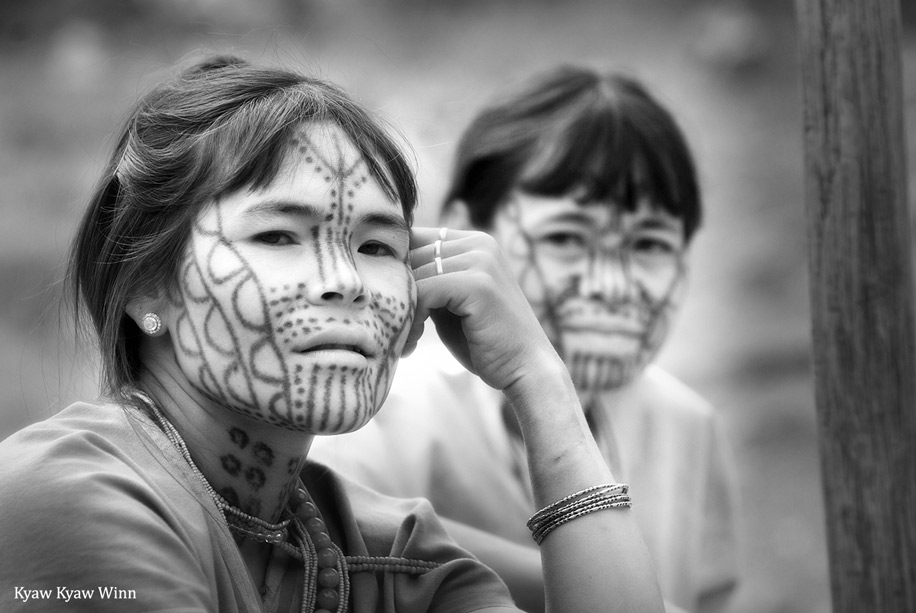
Chin women with tattooed faces. Photo by Burmese photographer Kyaw Kyaw Minn
WHO ARE CHIN PEOPLE?
Chin is an ethnic minority in Myanmar, also known as Kuki in India. They reside in India, Myanmar and Bangladesh, mainly in international border areas owning to British colonial policy.
The British used the compound terminology “Chin-Kuki-Mizo” to group the Kukish language speaking people. Missionaries utilized the terminology “Chin” to call Kukish ones in the Burmese side. They have Mongoloid features, with popularily low height, straight black hair and dark brown eyes.
There are no historical data about Chin people before 19th century. The Chin probably emigrated to Myanmar, especially to Chindwin valley in the late 9th or 10th century AD. Most Chin people went westward and might settled in the present Chin State in 14th century.
The significant landmark in the Chin’s history was the arrival of missionaries and the spread of Christianity. The acceptance of Christianity marked a departure to long-standing ancient custom and tradition.
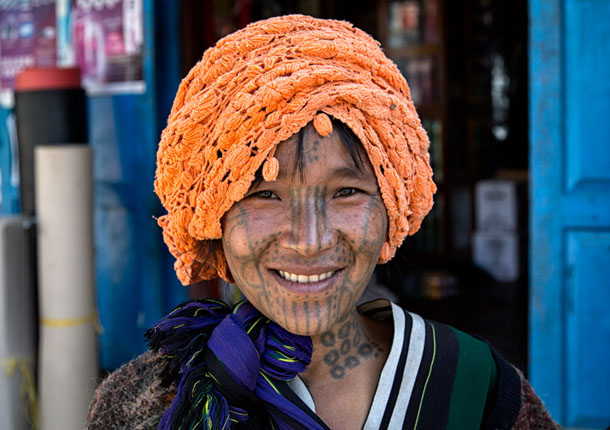
CHIN CULTURE
Chin does not have a first, middle or last name as it is common in many ethnic groups. However, a name can reflect achievement of grandparents or future wishes of a grandfather for a kid.
A gentle handshake is a usual greeting in Chin culture. Eye contact is sometimes regarded as act of challenge rather than a sign of politeness or attentiveness. So, almost Chin people will not look a speaker directly at eyes as they have a conversation.
Chin culture is rich in dances, music and fold tales. Until the introduction of writing system, Chin traditions were preserved and kept by storytelling to retransmit to next generations.

Fabric weaving is a Chin traditional craft that the production is highly restricted, and the products are much sought frequently by fabric collectors. Normally a Chin woman will try her best until a cloth is completed, working stably all daylight hours in shade of a bamboo dwelling. Using traditional “yakan” looms – a backstrap method of weaving, is similar to that utilized by the Naga. Only natural dyes are employed by taking extracts from local trees such as the Burmese lacquer tree, wild almonds, mahogany and indigo. Chin fabric is made manually with high standard. Cotton threads are spin by hand and motifs are diamond shapes.
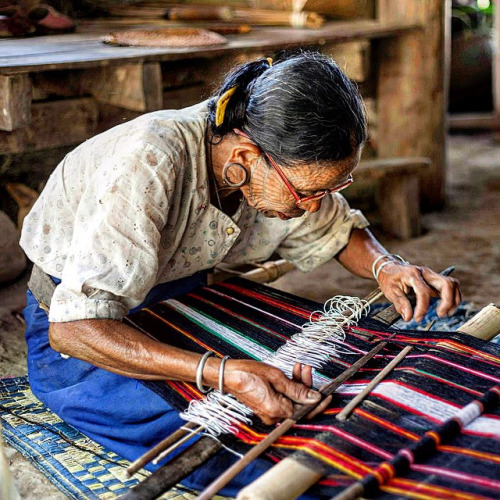
Zu is a traditional alcohol in Chin hill, which is regarded as a status symbol. Zu is homemade and supplied at villages feasts and celebrations. Only the males with highest status are enabled to take the first drink at a gathering.
Tobacco is considered as a status symbol too, a sign of wealth. Traditional meaning of “smoking” is via the use of a nicotine juice called “thibur“. It is used mainly by elders, who keep this juice in their mouths, then spit it out. “Thibur” is made by the way that nicotine is smoked in a water pipe which produces “thibur” drippings.
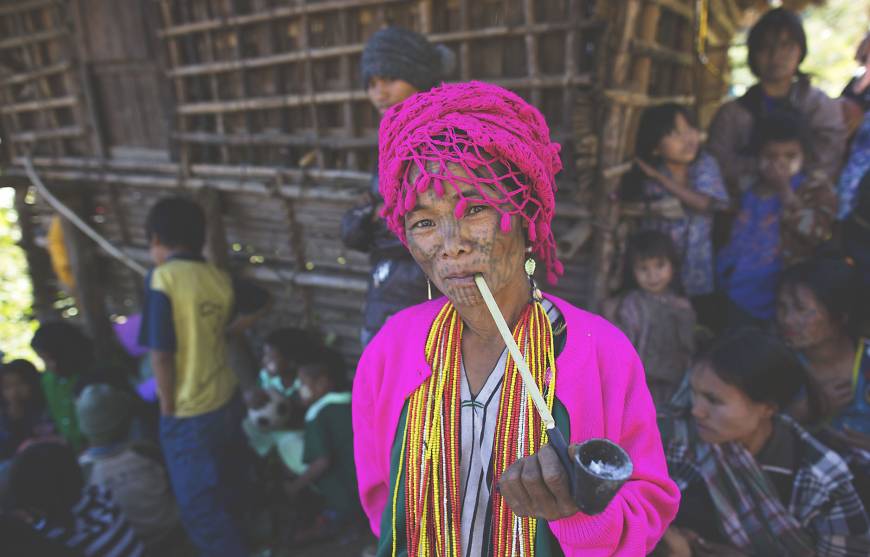
Until now, Christianity is the major religion of the Chin, who live in high terraces in the Chin Hills.
FACIAL TATTOOS
Chin women are usually identified by a complicated spider web covering their faces, called as “facial tattoos”. Usually a Chin woman tattooed when she was just about 9 – 12 years old. The process lasted about 1 day to be accomplished and was extremely painful, particularly tender eyelid area. Tattooing face is an archaic custom so as to prevent invaders from stealing away the local women. Other stories said that it could help young Chin girls avoid being attacked by wild animals, or keep prettiest girls away from being caught into harem by ancient kings.
Each Chin state’s region has a different tattoo pattern. Thus, it is possible to realize where a woman comes from by tattooed designs on her face.
At present, there remains a few facial tattoo women in each village. This custom is forbidden by Myanmar government. Young generations don’t want to practice it as well. Consequently, this Chin culture’s part will be gone soon. Therefore, if you can witness facial tattoos of last living generations, it will be a fortune.
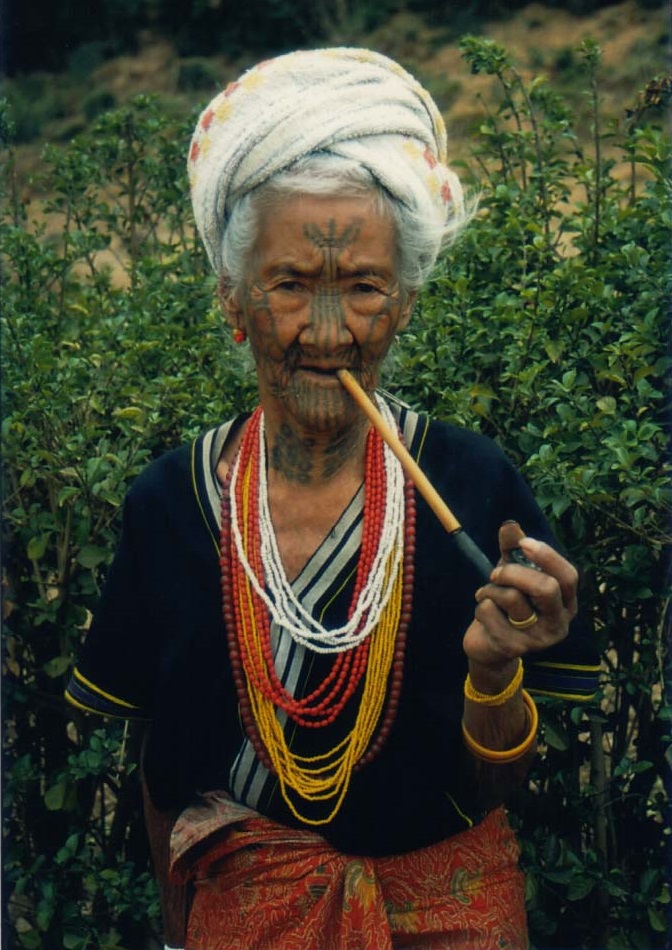
CHIN VILLAGES
Chin villages are near the Myanmar’s border areas with India and Bangladesh, and Mrauk U town. Several ones can be visitted comprise Panort, Kyar Aie Nu, Man Long and Che-ahaung.
Trekking and being homestay are great ways to discover local culture. Trekking to Chin villages, travelers will have chances to learn Chin daily life and understand facial tattoo custom. The villagers make a living by fishing (by bamboo nets), farming and handy fabric weaving.
In Chin village, you can watch their traditional dances like threatening monkey dance (to protect crops), dance in funeral, ritual offering dance, frightening evil dance, etc; or their traditional instrument performance like playing bamboo flute by nose. Some special constructions of Chin tribes like wooden poles, stone tomb, shaman’s house and ancient-styled huts will reflect parts of their culture.
Trekking trails will lead travelers to deep forests, fields and suspension bridges with spectacular views.


